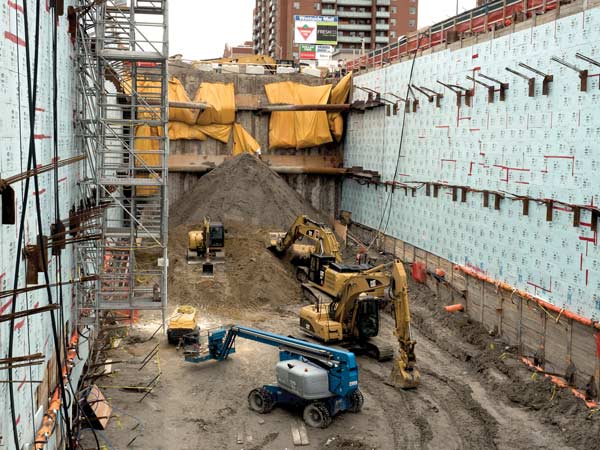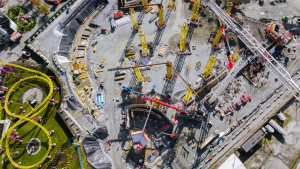A case study on the construction of the Caledonia station, part of the Eglinton Crosstown LRT project in Toronto, was presented at a recent symposium to illustrate the challenges with excess soil and potential solutions.
Karim Hosny, soil operations manager for Crosslinx Transit Solutions, was one of the speakers at the 2019 Excess Soil Symposium, hosted by the Canadian Urban Institute in Ajax, Ont. in December.
The project includes over 19 kilometres of new light rail. CTS, a design and construction consortium established to deliver the project, is comprised of ACS-Dragados, Aecon, EllisDon and SNC-Lavalin. While the construction of the Caledonia station is simpler compared to other stations on the line, it required deep excavation to create the station box. About 66,000 cubic metres of soil was excavated from the site.
“The top six or seven metres is your contaminated soil and the soil below is the soil that can be reused,” Hosny said.
One of the first stages before excavation begins on any project is to conduct soil characterization, he said.
“My goal was to get this done as soon as possible so when the construction teams were excavating, they know what the quality of soil is so there are no delays during the process,” he noted. “If you do it as you excavate there are a lot of delays with turnaround times of the samples and determining what is contaminated and what is clean.”
The contaminated soil went to GFL and the clean soil went to United Soils in Stouffville, Ont. for reuse.

“Some of the challenges with beneficial reuse receiving sites are the distance and the weather,” he explained. “Because Stouffville is quite a way (from the site), that adds to turnaround time, traffic on the roads, greenhouse gases from trucks, wear and tear on the roads and ultimately adds to project costs.”
Another challenge is many receiving sites will shut down when it rains because it gets muddy and the trucks get stuck.
To mitigate the risk of weather delays, Crosslinx implemented a temporary soil storage site located on the crosstown line.
“We have a plot of land and we have asphalted it so that it is not affected by the weather and we have three segregated cells, two of which are covered with tents, so that if it rains or snows it doesn’t affect the integrity of the soil,” said Hosny.
“We can also support the stations that want to work extended hours because a lot of the dump sites close at 5 p.m.,” added Hosny. “It also allows us to stockpile clean reusable sand material for backfill because the main challenge with backfilling is timing… This way we can at least store some of that clean material and help mitigate the timing factor of backfilling.”
Having multiple receiving sites approved and accessible during excavation can also be beneficial.
“Have those receiving sites in different areas of the city so when you have rain in Barrie and the Barrie site closes down you can go to Stouffville or Milton,” Hosny suggested. “If it’s raining all over and everything is shut down that’s when the temporary storage site allows you to continue excavating even though all your receiving sites are closed.”
The Eglinton Crosstown project is required to meet the best management practices issued by the Ministry of the Environment, Conservation and Parks, explained Hosny. According to the guidelines, the receiving site has to implement a fill management plan.
“A lot of these construction projects do not have these fill management plans so it has been difficult to reuse our soil on other construction projects although I feel that is the main goal of these new regulations that are being pushed out,” he said of the new Ontario government excess soil management plan regulations which will be phased in starting later this year.
He also suggested collecting environmental and geotechnical samples at the same time if the soil will be reused as backfill and to consider switching to an electronic ticketing platform for efficiency of soil tracking.
“Geotechnical goes hand in hand with environmental so when you do collect your samples for characterization, also collect samples for geotechnical to help save time and be more efficient,” said Hosny.
Follow the author on Twitter @DCN_Angela.











Recent Comments